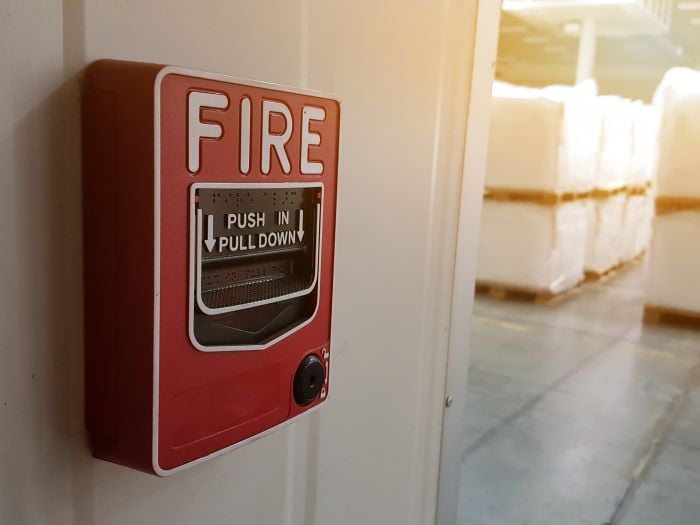
One of the essential parts of the safety systems in a building is the fire alarm system. You should not compare the fire alarm system with a smoke detector because it takes a more profound role. Every year, the systems help to protect lives and property by regulating some other systems in the building where you have them installed. Also, many regulations and laws make it compulsory for buildings to have fire alarm systems. For example, the NFPA 72 code makes it mandatory for buildings to have central automated monitoring stations. Together with other systems, the fire alarm system detects the possibility of fires, notifying occupants and emergency responders when a fire occurs.
In this piece, we’ll talk about the different parts that make up the fire alarm system.
What are the Main Components of a Fire Alarm System?
Looking at a fire alarm, one might think it's all about red and white lights on the walls with fire alarm pull stations by the doors. While these are components of the system, there is a lot that goes on behind that we do not see. Fire alarms have different parts depending on the type of system in question. However, in general, fire alarm systems have three main components:
Fire alarm control panel:
This part of the system, like the name, leads and controls other parts. The control systems function is to monitor the inputs coming in from the initiating devices. From there, the control hub ensures that the entire system's integrity is maintained while it monitors the output and gives out the needed information.
Initiating devices
These are the devices that activate the fire alarm system. These devices are also called input devices and can either be manual or automatic.
- Manual initiating devices: Initiating devices that trigger the system with the help of humans is called manual initiating devices or manual initiating stations. They can be buttons, pull stations, break glass stations, etc. Considering the sensitivity of these devices, they should be in parts of your building where people can identify, access and operate them.
- Automatic initiating devices: The devices in this category detect changes in their environment, and they trigger the system automatically in times of emergency. The list of devices that fall under this category is exhaustive, and they include flame detectors, carbon dioxide detectors, water flow detectors, smoke detectors and many more. Some innovations in the automatic initiating devices now use cameras artificial intelligence to analyze and detect fires even better than before.
Notification devices
Some consider the notification devices as an essential part of the fire alarm system. These devices alert people during emergencies using sound, visual and sometimes smell based stimulus. However, the most common type is the audio-visual type that uses bell/ siren/ horn combined with strobe or flashing red light.
Other parts that may be part of the system include:
- Primary power supply: the main electricity source to your fire alarm system is usually supplied as 124v or 24v.
- Secondary power supply: backup power supply could be a lead-acid battery that could power the system if there is a power failure.
- Building safety interfaces: These things in the building make it easier for people to leave in the case of an emergency. They include ventilation systems, exit lighting, etc.
Contact the Fire Alarm System Pros
From the initial design to the installation to regular inspections and maintenance, the fire alarm experts at Koorsen Fire & Security are here to help. Since 1946, we've been protecting and securing businesses of all sizes. Contact us today for all of your fire alarm system needs.


